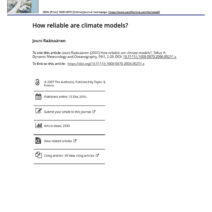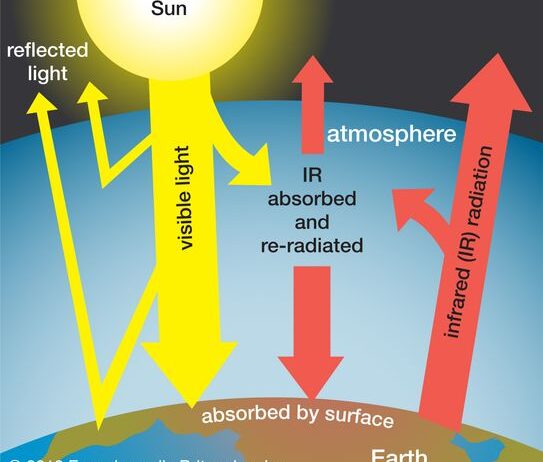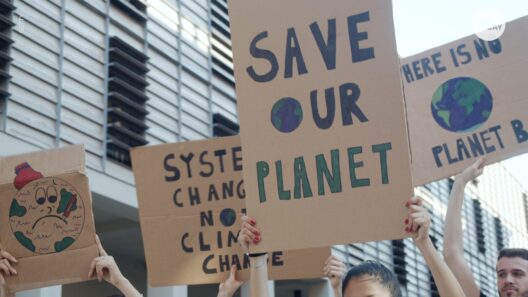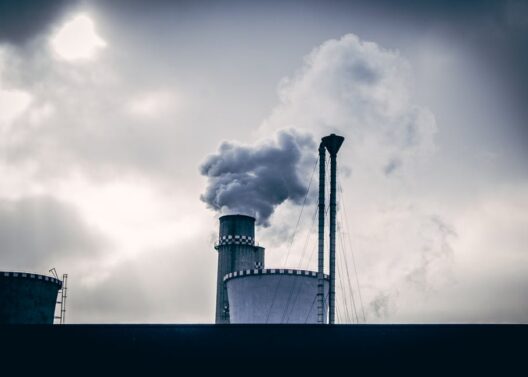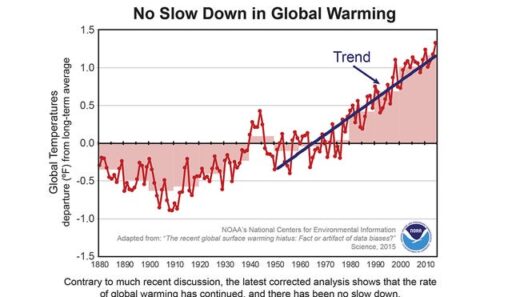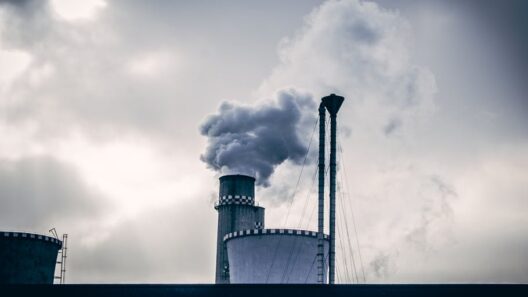Greenhouse gases are an intricate yet vital component of our planet’s atmosphere. Often vilified in discussions surrounding climate change, they play a dual role, both indispensable and detrimental. Understanding how they impact Earth’s climate involves unraveling the science behind their function in our atmosphere, and why addressing their emissions is paramount for our future.
At the heart of the greenhouse effect is a simple principle: the Earth receives energy from the sun, primarily in the form of sunlight. This solar energy warms the Earth’s surface. Subsequently, the Earth emits this energy back into space in the form of infrared radiation. However, not all of this warmth escapes; certain gases in the atmosphere trap some of this heat, preventing it from dissipating completely. This process is akin to wrapping the planet in a cozy blanket, ensuring temperatures remain conducive to life. The crucial question emerges: what happens when the blanket becomes too thick?
Greenhouse gases (GHGs) such as carbon dioxide (CO2), methane (CH4), nitrous oxide (N2O), and fluorinated gases, are integral to this heating process. Each gas possesses unique properties that affect the atmosphere’s energy balance. Carbon dioxide, for instance, lingers in the atmosphere for hundreds of years, primarily generated through processes like fossil fuel combustion, deforestation, and environmental degradation. Methane, on the other hand, is produced from both natural sources, like wetlands, and human activities such as agriculture and fossil fuel extraction. While methane is less abundant than carbon dioxide, it is significantly more potent in trapping heat—over 25 times more effective over a 100-year period.
The efficacy of GHGs is measured by their Global Warming Potential (GWP), which represents their ability to contribute to warming relative to carbon dioxide. This complex metric allows scientists to assess environmental impacts more accurately, fostering a nuanced understanding of how different gases contribute to climate change. With a GWP surpassing even that of carbon dioxide, nitrous oxide—a gas released from agricultural practices—poses a considerable threat. Similarly, fluorinated gases, though present in much smaller concentrations, have an extraordinary ability to trap heat, raising concerns for their long-term effects on climate stability.
As the concentrations of these gases rise, a cascade of effects begins to unfold. The term “climate change” often evokes images of vanishing polar ice or unprecedented weather patterns. Temperatures surge, glaciers melt, and sea levels rise, often with catastrophic repercussions. For example, increased ocean temperatures lead not only to stronger storms but also to complex marine ecosystem shifts and coral bleaching. Such changes disrupt not merely marine life but also the communities that depend on these ecosystems for their livelihoods.
Extreme weather events, which can be attributed to climate change driven by greenhouse gases, illustrate this precarious balance further. From heatwaves that scorch cities to hurricanes that unleash devastation across coastlines, the anomalies in weather patterns exacerbate health risks, economic instability, and food insecurity. One particularly alarming phenomenon is the intensification of rainfall, leading to floods and landslides. Our planet is not merely warmer; it is experiencing a reshuffling of weather patterns that we are only beginning to understand.
The interaction of greenhouse gases with the Earth’s system exemplifies a delicate equilibrium, one that is easily perturbed. For instance, forests and oceans act as significant carbon sinks; they absorb and store vast amounts of carbon dioxide. However, as climate change progresses, the ability of these natural systems to help mitigate warming diminishes. Deforestation alters this dynamic, releasing stored carbon back into the atmosphere and further exacerbating the problem. Ultimately, this sets off a feedback loop—temperature rises lead to degradation, which then produces more GHGs, culminating in heightened warming.
Despite the bleak prospects painted by science, there is a sliver of optimism. Understanding the mechanisms behind greenhouse gases equips us with the knowledge to combat their effects. Mitigation strategies are essential; these include adopting renewable energy sources, enhancing energy efficiency, and transitioning towards sustainable agricultural practices. Innovative technologies, such as carbon capture and storage, also offer a way to address existing greenhouse gas emissions while we shift societal norms towards lower carbon footprints.
Moreover, pursuing international agreements—such as the Paris Accord—highlights the importance of global collaboration in tackling climate change. These frameworks encourage nations to commit to reducing emissions collectively, fostering a sense of global responsibility. The successes and challenges observed within this cooperative model serve as a bellwether for future endeavors in climate action.
Ultimately, the discourse surrounding greenhouse gases intersects with socio-economic factors. Awareness leads to activism, promoting a grassroots movement for change. Communities can drive localized efforts to reduce emissions by advocating for sustainable practices and supporting policies aimed at preservation and restoration. This grassroots engagement is critical in amplifying the message and ensuring that environmental justice prevails alongside climate action.
In conclusion, the impact of greenhouse gases on our planet’s climate is multifaceted and profound. From influencing weather patterns to affecting biodiversity, their presence necessitates an urgent and informed response. Embracing a holistic understanding of this phenomenon unlocks pathways to innovative solutions, presenting not just a challenge, but also an opportunity for a sustainable transformation. By changing our perspective on greenhouse gases—from vilification to understanding—we can foster a collaborative effort towards a resilient and thriving planet.

